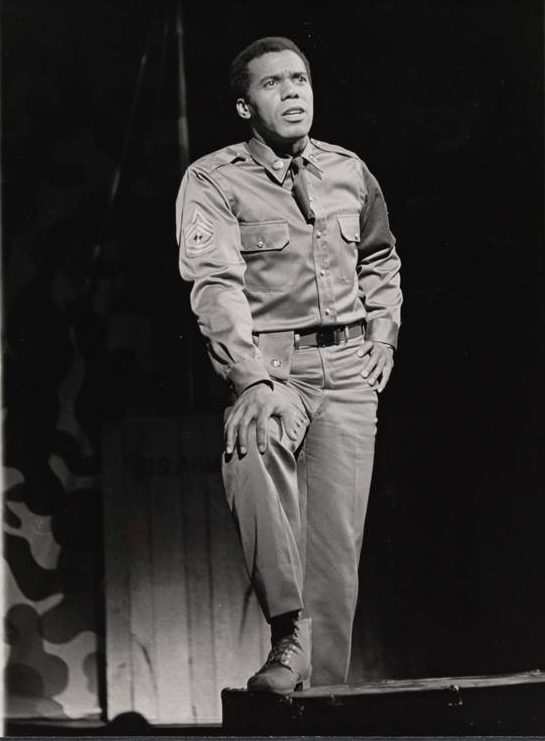Robert Hooks was nominated for a Tony Award for his lead role in the musical, Hallelujah, Baby!, has received both the Pioneer Award and the NAACP Image Award for Lifetime Achievement, and has been inducted into the Black Filmmakers Hall of Fame. He also won an Emmy Award for his PBS special Voices of Our People.
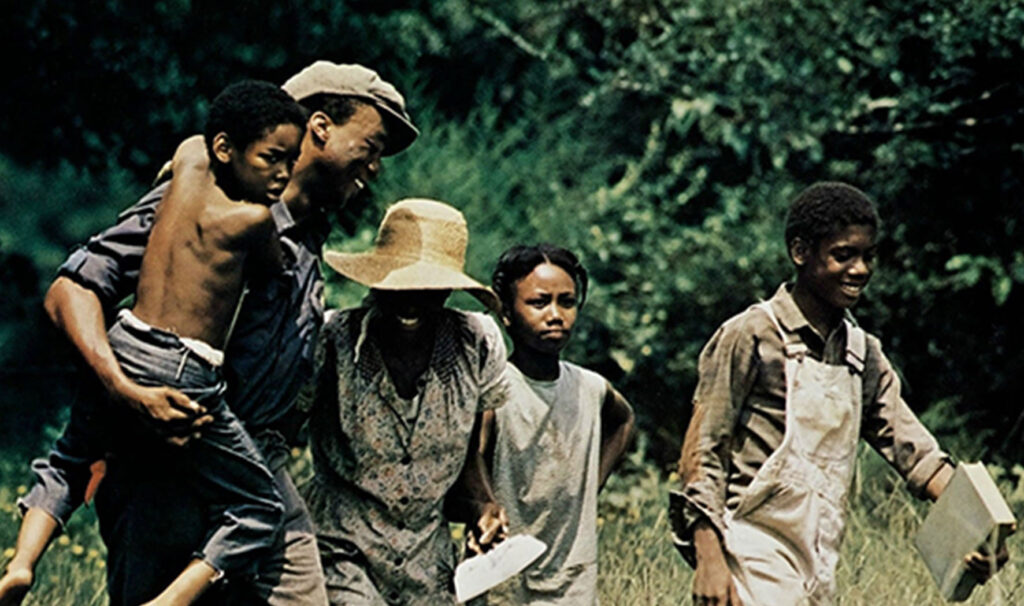
There is no more prestigious honor for an American film than being selected by the National Film Registry (NFR) as a classic film event to be preserved forever in American Film Heritage and Archives. I congratulate all those films with the good fortune of being recently selected by the NFR, including my colleague and NEC inaugural director Michael Schultz, and his amazing classic film “Cooley High” starring Glynn Turman and his deeply talented acting ensemble in the film. But, what takes my personal enthusiasm to a whole ‘nova-leva’ was the long-awaited selection of Lonne Elder III’s breathtakingly superb film classic “Sounder”. So, I acknowledge and congratulate Cicely Tyson, Paul Winfield, Kevin Hooks, Eric Hooks, Yvonne Jarrel, Taj Mahal, Janet Maclaughlan, George Kennedy, Martin Ritt, and Robert Radnitz… for making the NFR ‘cut’!
He passed down his passion for acting to two of his sons, Kevin Hooks, and Eric Hooks. Kevin Hooks is also a film director and cast his father in two of his films: Passenger 57 (1992) and Fled (1996). Eric Hooks is an actor, known for Sounder (1972) and Just an Old Sweet Song (1976).
Significant roles for which Robert is known, include Reeve Scott in Hurry Sundown (1967), Mr. T. in the blaxploitation film Trouble Man (1972), Grandpa Gene Donovan in the comedy Seventeen Again (2000), and Fleet Admiral Morrow in Star Trek III: The Search for Spock (1984). He also appeared on television in an episode of the NBC crime drama series The Eddie Capra Mysteries in 1978 and portrayed Doctor Walcott in the 1980s television series Dynasty.
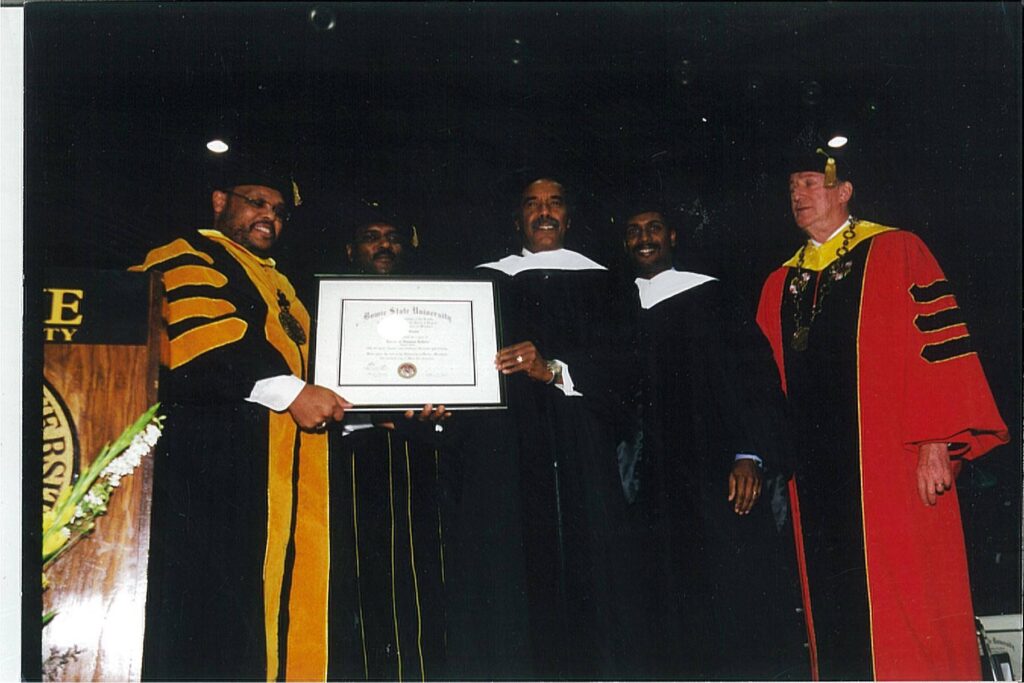
University System of the state of Maryland, made the first in its history, granting two simultaneous degrees of “Doctor of Humane Letters (Honoris Causa) to a father and son team of America’s Black theatre movement, Robert and Kevin Hooks. With Robert Hooks – Degree Ceremony at Maryland’s Bowie State University in May of 2000, where I was the ‘Class of 2000’ keynote speaker. On that occasion, my son Kevin Hooks and I received our Doctor of Humane Letters Degrees (Honoris Causa).
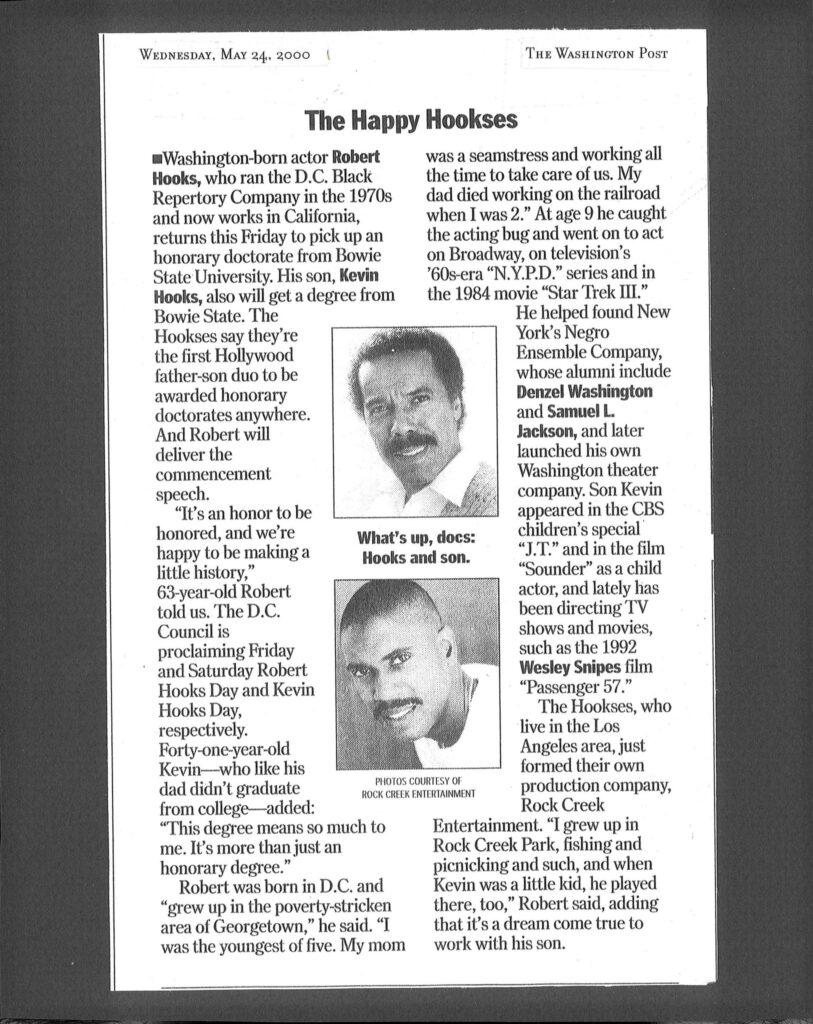
“One of the proudest moments of my life and career was this amazing and honored experience I shared with my #1 son (and great creative artist) Kevin Hooks. And we both made ‘Father/Son history at the graduation event at Morehouse College, one of the most important Black Colleges in America!”

Fun Flashback let’s go back a while. Here are eight of my amazing and talented celebrity colleagues as we show off some serious ‘Afros’ for this celebrated EBONY COVER!
Nominations:
Tony Award for Best Actor in a Musical
Hallelujah, Baby!
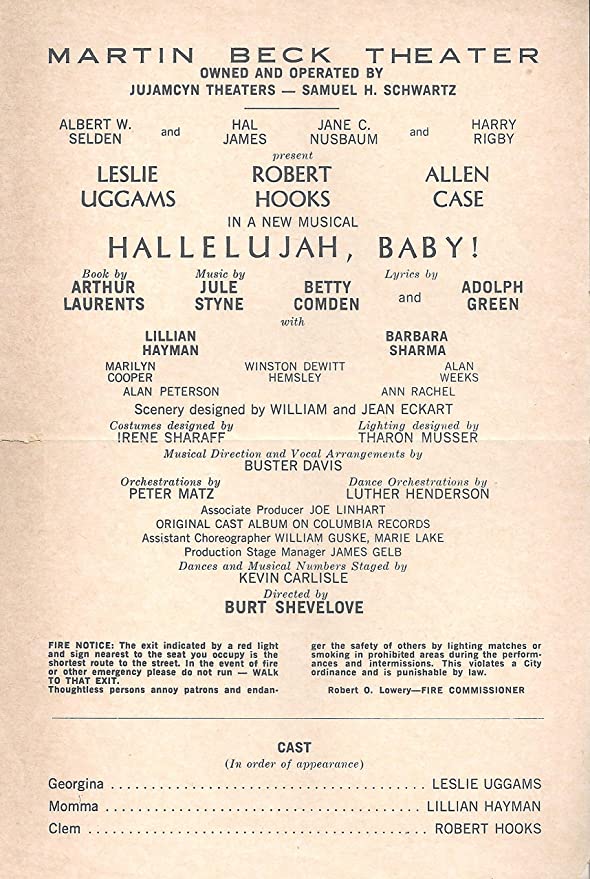
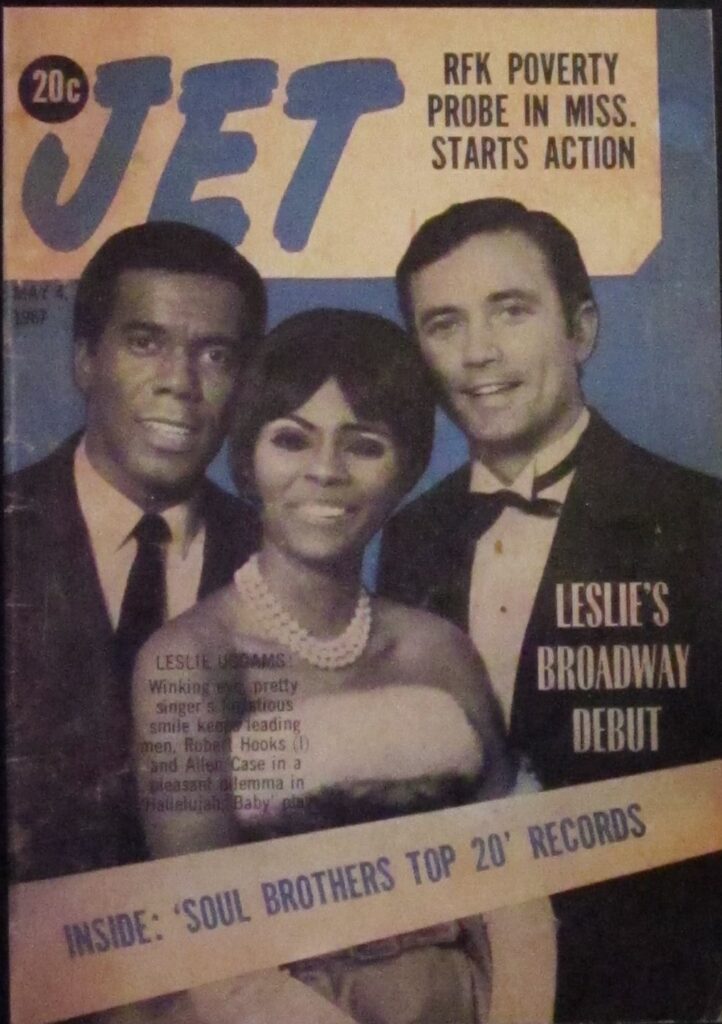
Leslie and I were both nominated for the Tony Award that year. How long ago you ask… just look at the price of the Jet back then.

Robert Hooks (sitting on a stool), Leslie Uggams, and company in the stage production Hallelujah, Baby! – (Friedman-Abeles)

Robert Hooks, Garrett Morris, Alan Weeks, Kenneth Scott, and Winston DeWitt Hemsley in the stage production Hallelujah, Baby! – FRIEDMAN-ABELES PHOTOGRAPHS: [LEGACY COLLECTION]
Robert Dean (Bobby) Hooks is an African-American actor in films, television, and stage. With a career as a producer, theatre builder, and political activist to his credit, he is most recognizable to the public for his over 100 roles in films and television.
HAPPY BIRTHDAY ROBERT [ 2024 ]
Slide Presentation by Dale Ricardo Shields
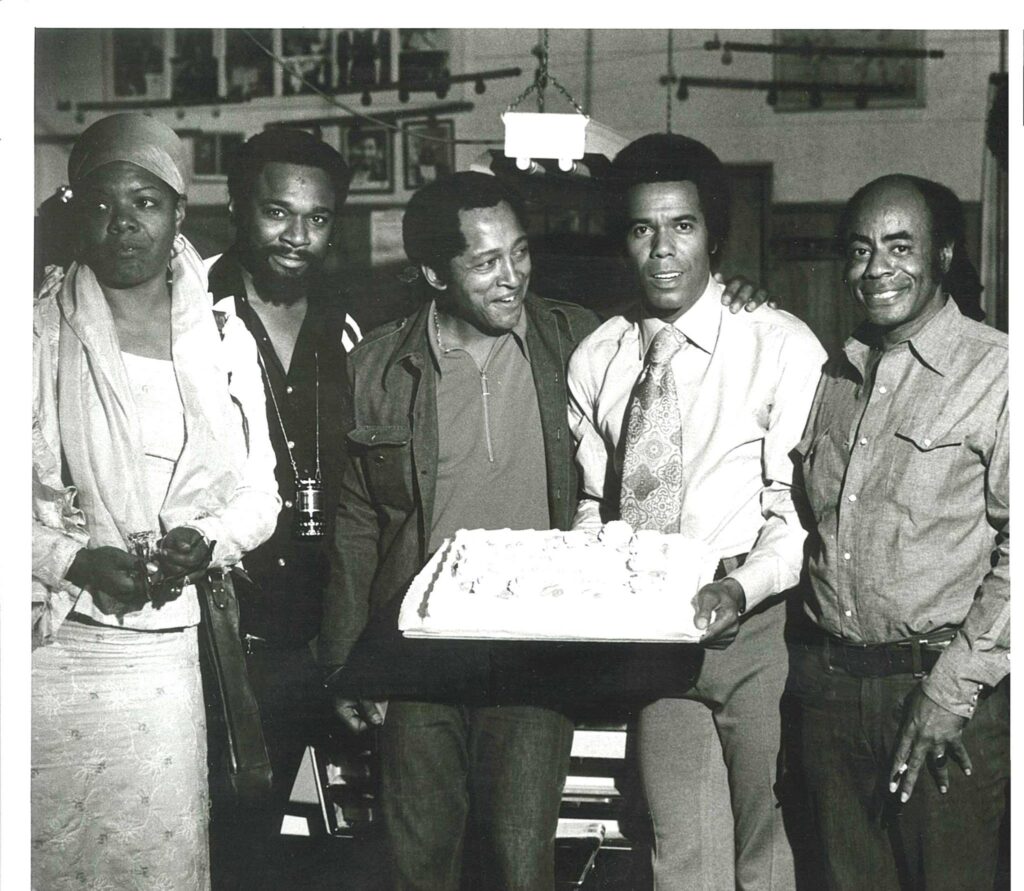
Remembering my longtime and dear friend Maya Angelou, Here’s a FUN Flashback Friday photo from the set of “Trouble Man” (circa 1971). Surprising me on the set for my Birthday is, from left to right, the supremely brilliant Maya Angelou, director Ivan Dixon, actor Lawrence (Al) Cook, me as “Trouble Man/Mr. T” and that most regal thespian Roscoe Lee Browne. The cake and the surprise visit were arranged by Maya and Roscoe. Between us and the crew- the cake was devoured in less than a half-hour.
DCN Presents: The Robert Hooks Story
Biography
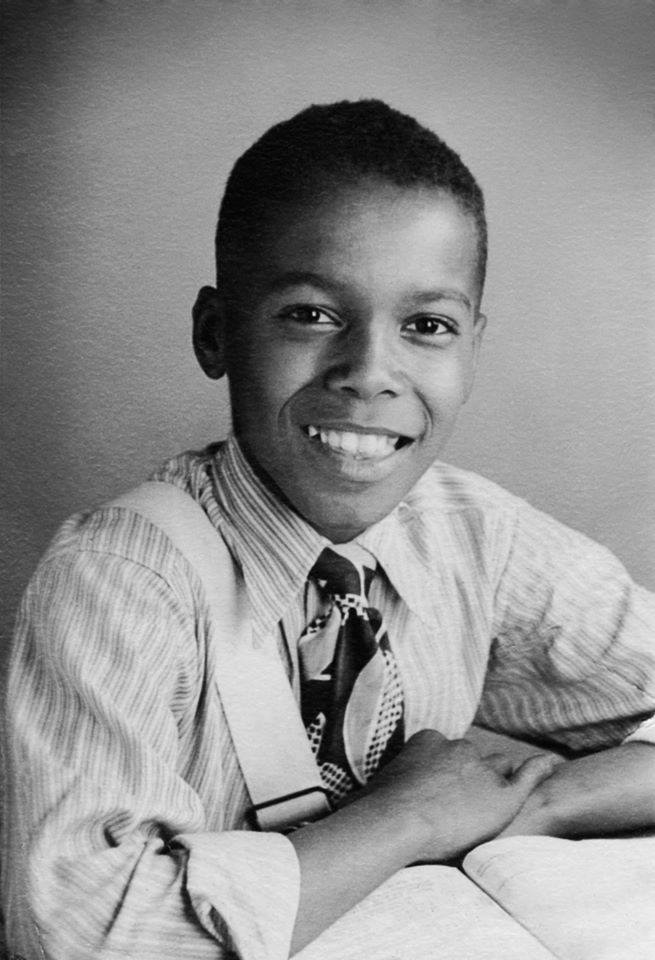
Robert (Bobby Dean) Hooks – Here’s a throwback photo of me, little Bobby Dean, at 10 or 11 years old, and Captain of the Steven’s Elementary School Safety Patrol. I was happy when this school photo sitting was over so I could get back to my homeroom and jive around with my classroom buddy Roberta Flack. Those were some very fun times.
Early life
Parents: Edward Hooks and Bertha Hooks
The youngest of five children, Hooks was born in Foggy Bottom, Washington, D.C., the son of Bertha (née Ward), a seamstress, and Edward Hooks, who worked on the railroad tracks, where he died.
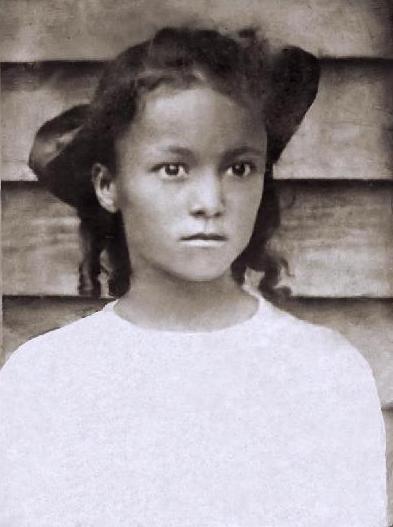
My mother at age 14. Isn’t she something? The photo was restored by ‘Dexterity Images’ by artist Dexter Bunn.
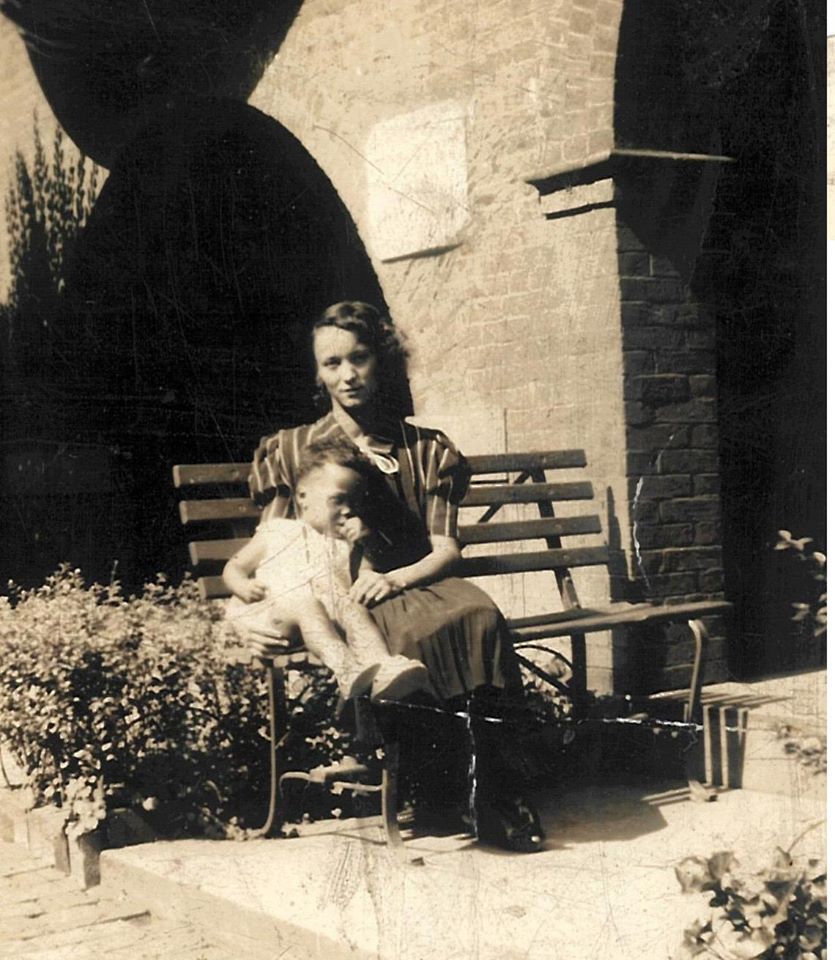
My Mother and Me…

Bertha (Bert) Ward Hooks, Elizabeth Ward Eatmon, and Alma Powell are looking fabulous! – Newport Place, NW, Washington, DC.
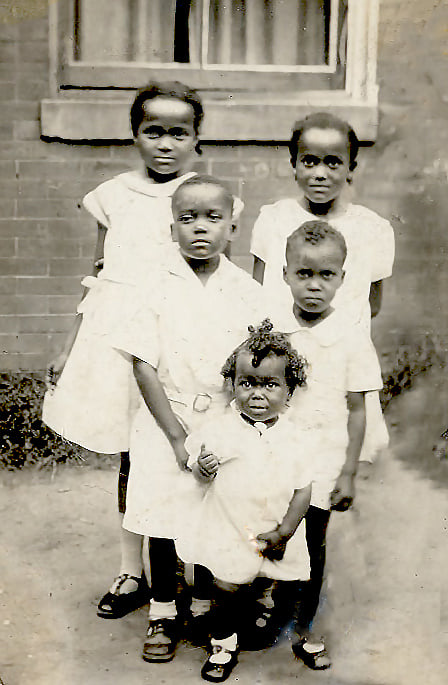
My siblings and me (guess who’s ‘me’) posing for the Sunday photographer in front of our railroad flat in the Foggy Bottom ghetto of our nation’s capital (circa 1939.) Yes! that’s me in front holding my wee-wee cause I had ‘to go’. But they needed the shot so my two brothers were holding the back of my dress (yes! dress! it was hand-me-down time, and that’s all there was.) All my siblings are gone now (bless their beautiful souls), but what a life we shared growing up together!
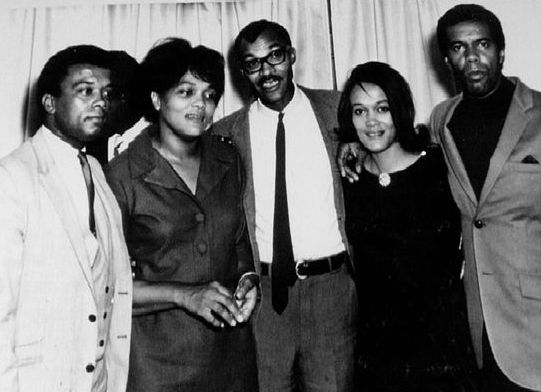
Me and my amazing siblings (l to R) Charles Edward, Bernice, James Walter, Caroleigh, and Me (the baby!) These guys helped raise me, up from the streets of ‘the foggy bottom’! Love you all,..may you continue to rest in glorious peace…

Here’s a Thursday throwback I’ll share. Standing on my hotel room balcony looking across the court, anxiously waiting to see three of my favorite cousins in all the world. Three amazing women I hadn’t seen since I was a small boy, and they were energetic youngsters growing up on a farm, who taught me everything I needed to know about life on a farm in deep south North Carolina. At the time I was on location in Wilmington North Carolina shooting a big television movie and had called them to see if they could come to the film set- so we could hang out and catch up after so many decades… And LOOK!..there they were walking across the courtyard, my three adorable cousins Lula, Mamie, and Roxie, the Ward sisters! We hugged and smooched and had a fabulous mini-family reunion all day that day! Here we are pictured outside in the hotel courtyard, Roxie standing with me, Lula (who has since sadly passed), and Mamie sitting. It was one of the most exciting times for me- sitting with them and their husbands, laughing and sharing wild kid’s stories of my young summer vacation days with them on my Uncle Joe and Aunt Essie’s tobacco farm. These are three great women pictured with me in this photo.
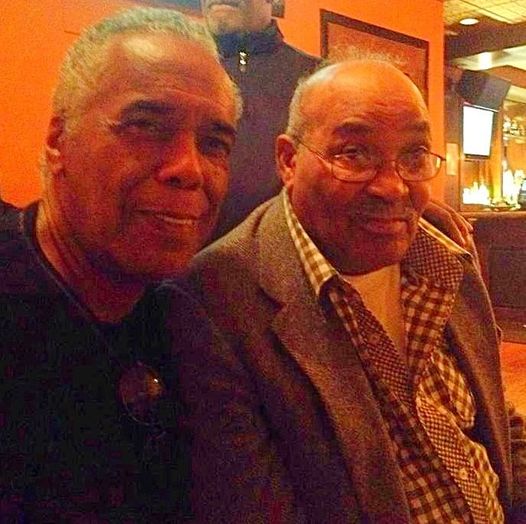
“This is my amazing and caring brother James Walter Hooks and me. Growing up in DC’s Foggy Bottom, my four siblings, and our angel of a Mom, Mae Bertha (Bert), and I, lived (despite having very little material) an astoundingly beautiful and healthy life! ‘Jimbo’ was my running buddy and true mentor, and gave me all the protection I needed to whether any difficulty as a youngster on the DC streets! Though he’s gone from this plane, I’m sending him all the love I have (and will always have) for him, and to give him my eternal thanks, (and my other amazing four siblings, all gone from us now)) for guiding me into and through my own fabulous experience on this earth!“
Career
Robert Hooks is regarded, variously, as a gifted artist who has broken color barriers on stage, in film, and on television. A leading man when there were few African American matinee idols. He originated roles on the New York stage in such classics as Dutchman, A Taste of Honey, and Where’s Daddy? for which he won the Theatre World Award. He was the first African American male lead on a television drama, the original N.Y.P.D.
In 1968, Hooks was the host of the new public affairs television program, Like It Is.
Famously, Hooks, along with Douglas Turner Ward, founded The Negro Ensemble Company (NEC). He then brought Gerald Krone in as Production Manager. The NEC is credited with the launch of the careers of many major Black artists of all disciplines, while creating a body of performance literature over the last thirty years, providing the backbone of African-American theatrical classics. This important theater company has produced plays by Charles Fuller, Wole Soyinka, Peter Weiss, Derek Walcott, Samm Art Williams, Leslie Lee, Joseph A. Walker, and many others.
Additionally, Hooks is the sole founder of two significant Black theatre companies: the DC Black Repertory Company, and New York’s Group Theatre Workshop, which was created to mentor the talents of New York’s disadvantaged youth. He brought in Dr. Barbara Ann Teer to help teach classes and develop the workshop.
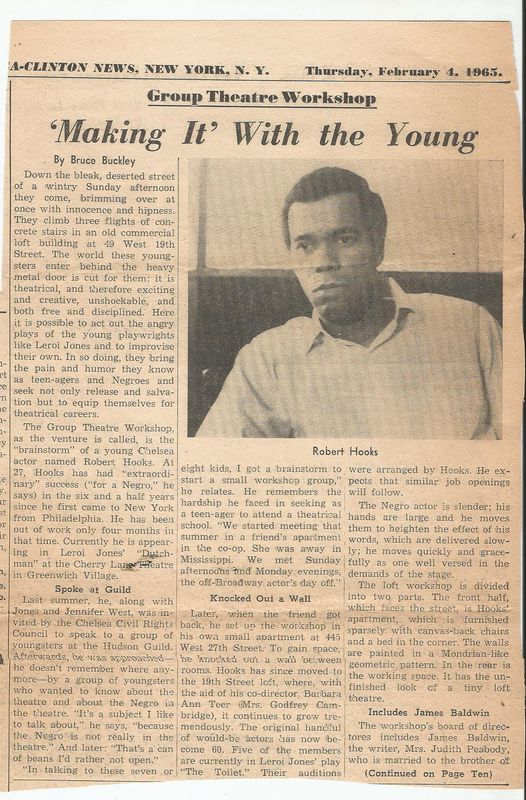
“This was our Group Theatre Workshop! culled from the underprivileged communities of New York’s five working-class boroughs. The first-ever teenager’s theatre arts group! Many students went on to big success in the entertainment industry! Every major American city should have such an outlet for its hungry young talent!“

“The Group Theater Workshop (the first and ONLY Black teenage theatre company in America…ever!) Here is what a top professional New York theatre producer (and creator of the NY Shakespeare Festival) thought of this dynamic young theatre group.”
“Saturday morning classes were held in the living room of my Chelsea apartment (circa 1964.) The Kurt Vonnegut quote, James Baldwin, Gwendolyn Brooks, Langston Hughes, poems, and many other Black literary materials ‘lit up’ the excitement of these workshop sessions at our new Group Theatre Workshop.
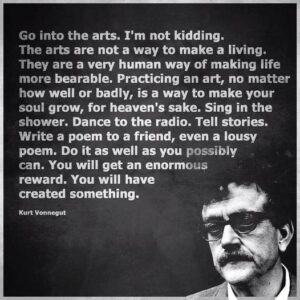
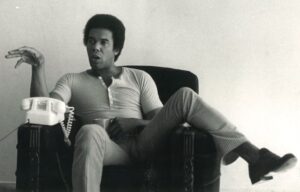
“All of it was informal (as you can see here! where I guess I should have been standing front and center ) but Oh! so vitally important to the young wannabee thespians getting the chance to show their talents. Everything was free to those New York youngsters who wanted to learn the art of acting and of the new and burgeoning Black theatre movement!”
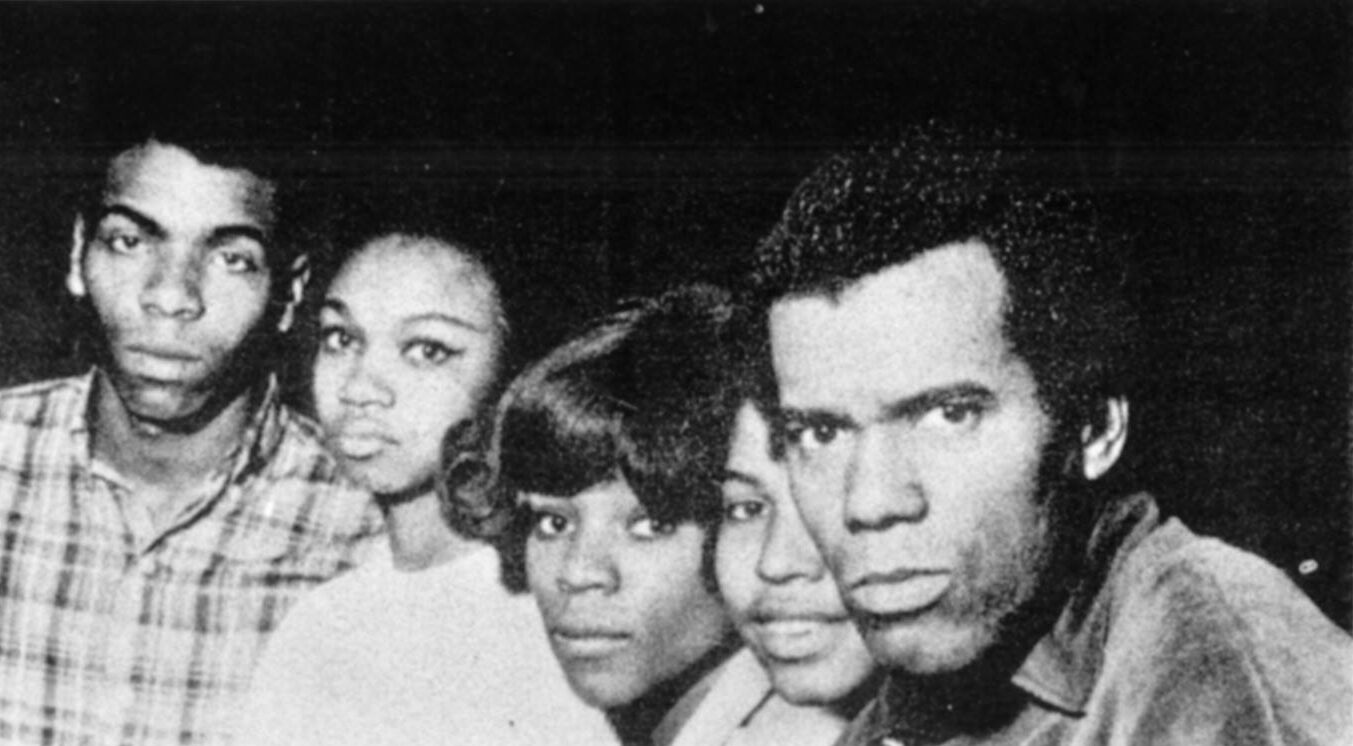
“Here are some young artists/students from my very first drama company… The Group Theatre Workshop (circa 1964…a tuition-free arts program and the precursor to the Negro Ensemble Company…and also the model for its stellar training arm). From left to right.. Bostic Van Felton, Hattie Winston, Maxine Griffith, Pamela Jones, and me. These four young artists, together with thirty other teenagers from the mean streets of New York, changed their own lives even as they sowed the seeds of change for others.”
23 Teen-Agers to Perform ‘We Real Cool’ in City Parks
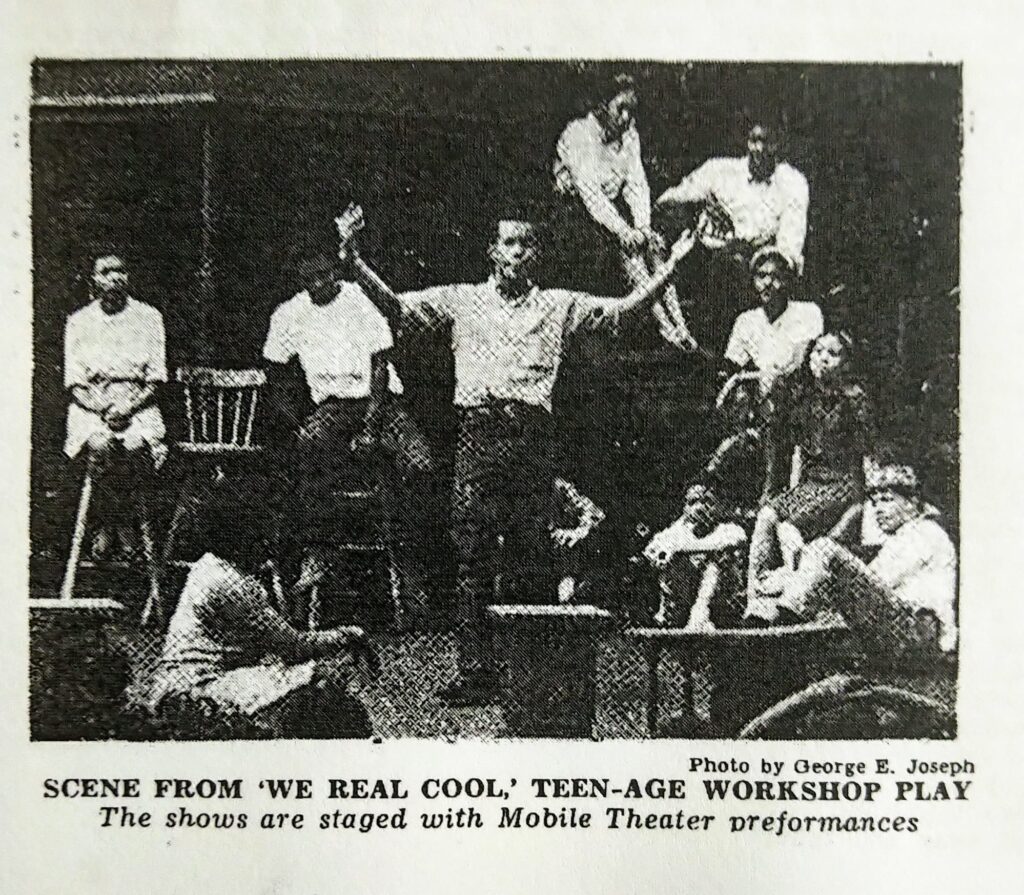
This is a rare image from a performance by The Group Theatre Workshop (GTW), my very first theatre company (circa 1964) featuring 25 teenage New York artists. In the summer of 1964 these young teenage artists, a part of the brand new Group Theatre Workshop (GTW), we’re getting a performance chance of a lifetime. The opportunity to perform in the New York professional theatre arena as youngsters! Which created a historic opportunity for these young theatre acolytes of color to move forward and find their possible careers in the arts. The show I produced and directed — “We Real Cool” by Gwendolyn Brooks –toured with Joe Papp’s New York Shakespeare Festival Public Theater, where I was starring as “Henry V” in the evenings, while GTW performed “…Cool” in the afternoons for the neighborhood youngsters. I also arranged for union salaries from Papp for all the young GTW actors. Some in the cast were: Hattie Winston, Antonio Fargas, Monti Ellison, Daphne Reid (then Daphne Maxwell), James Long, Hampton Clanton, Bostic Van Felton, Tina Nurse, Margo Chan, and other talented Workshop teens!
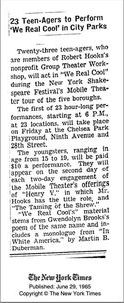
23 Teen-Agers to Perform ‘We Real Cool’ in City Parks
Twenty-three teenagers, who are members of Robert Hooks’s nonprofit Group Theater Workshop, will act in “We Real Cool” during the New York Shakespeare Festival’s Mobile Theater tour of the five boroughs.
June 29, 1965
After finishing a speech on the Black theatre movement, I loved mingling and hanging out with these DC students. I had just returned to my hometown to begin building the DC Black Repertory Company!…
In my element here!
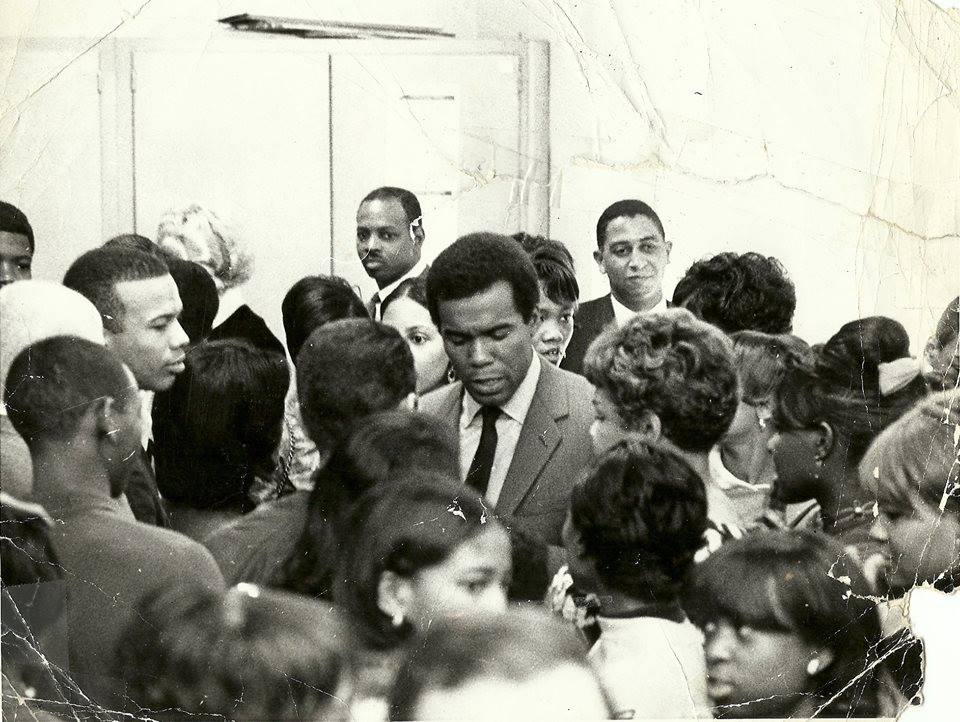
Photo courtesy of Howard University
Robert Hooks – December 17, 2014
Per Dale Shields who chose this photo to illustrate the important principles stated below: Robert Hooks…Sometimes… if you look at a photograph… it speaks volumes. Teach the children. Share your stories. Pass on our history. “Each one, teach one.” {Each One Teach One is an African-American Proverb. The original author is unknown.} This phrase originated in the United States during slavery, when Africans were denied education, including learning to read.
Many, if not most slaves were kept in a state of ignorance about anything beyond their immediate circumstances which were under the control of owners, the lawmakers, and the authorities. When a slave learned or was taught to read, it became his duty to teach someone else, spawning the phrase “Each one, teach one.” In the first half of the 20th century, the phrase was applied to the work of a Christian missionary, Dr. Frank Laubach, who utilized the concept to help address poverty and illiteracy in the Philippines. Many sources cite Dr. Laubach as creating the saying, but many others believe that he simply used it to advance the cause of ending illiteracy in the world.
In the 1996 novel Push by Sapphire as well as the 2009 movie Precious the expression is used as the name of an alternative school that the principal character is attending after being expelled from public school.”}
*~*
HOW IT ALL STARTED…
Dear Dale… Hopefully, because you have a ready-made historical platform, you having this ‘accurate’ information might move us forward, toward correcting the persistent, misinformation of the founding of The Negro Ensemble Company.
Peace, Robert
Robert Hooks, The Negro Ensemble Company
And the Actual Sequence of His Causes
That Led to The Birth of the NEC

“The Negro Ensemble Company was fortunate in having phenomenal theatre photographer Bert Andrews on our staff. Bert insisted on composing this classic close-up of the three founders (NEC circa 1967). Left to right: Administrative Director Gerald S. Krone, Artistic Director Douglas Turner Ward, and Executive Director/Producer Robert Hooks. We wanted to create something more than just a theatre company that produced new plays, but rather a cultural institution comprised of a producing entity (presenting 4 to 5 mostly original plays per season), an acting company employing 15 top Black professional performing artists, and vibrant free training programs for actors, writers, directors, designers, and aspiring theatre administrators. With an initial three-year Ford Foundation grant of a million and a half dollars, the three of us were determined to build a new and completely autonomous theatre institution, one where we three were always in complete control of our destiny in the world of national and international theatre production and training. The immense scope and ongoing influence of the NEC can be grasped on its Wikipedia page (https://en.wikipedia.org/wiki/Negro_Ensemble_Company). Suffice it to say there is barely any TV show, film, or major theatre production from the 1960s into the present, that does not reflect talent (in front of or behind the lights) that did not pass through or be affected by the creation of the Negro Ensemble Company.”
NEGRO ENSEMBLE COMPANY documentary 1 of 3
Negro Ensemble Company documentary 2 of 3
Negro Ensemble Company documentary 3 of 3
~*~
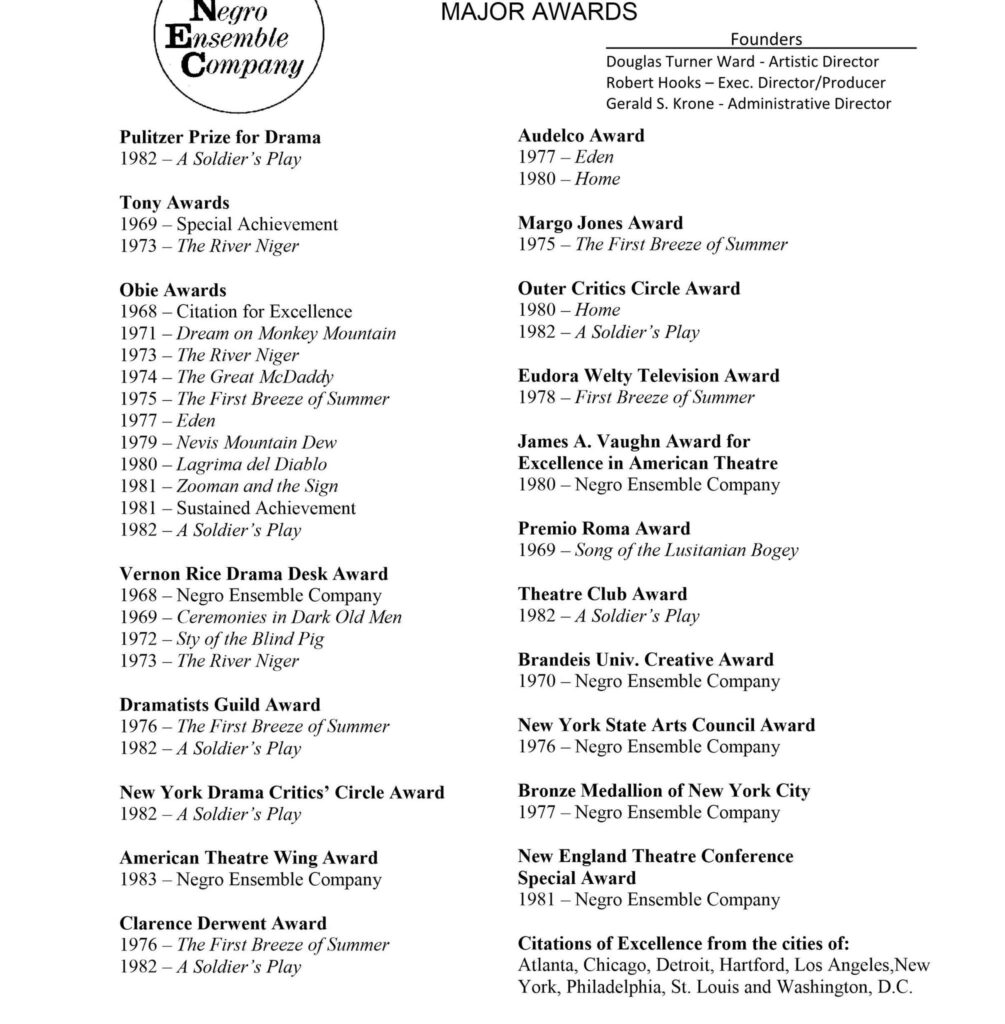
A friend asked what were some of the important theatre awards the world-famous Negro Ensemble Company (NEC) had garnered over the years. Well, here’s an early list I have on hand. However, there are several more prestigious theatre Awards not included here, that were bestowed on NEC into the 21st century. Trust me, no other Black American theatre company has such a list.
While “Happy Ending” & “Day of Absence” were not produced by the NEC until the 1969-70 season, MY INDEPENDENT 1965 PRODUCTION OF THEM led to the creation of the NEC in 1967.

“A piece of important Black history… These two brilliant one-act plays were solely responsible for the creation of the world-famous Negro Ensemble Company!… And also influenced and fueled the beginning of the Black Theatre Movement in America!”
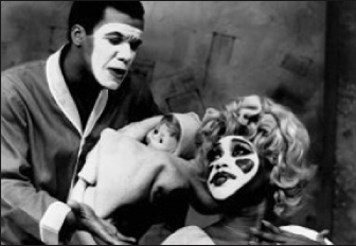
“Day of Absence“ by the late, great Douglas Turner Ward. “Absence” and its companion piece “Happy Ending” (circa 1965,) were the two plays that led to the creation of the famed Negro Ensemble Company TWO YEARS LATER. Here, in whiteface, are characters John and Mary, me, and the brilliant artist Barbara Ann Teer. Happy Ending and Day of Absence left audiences howling with laughter, but getting Ward’s message regarding white prejudice in America!
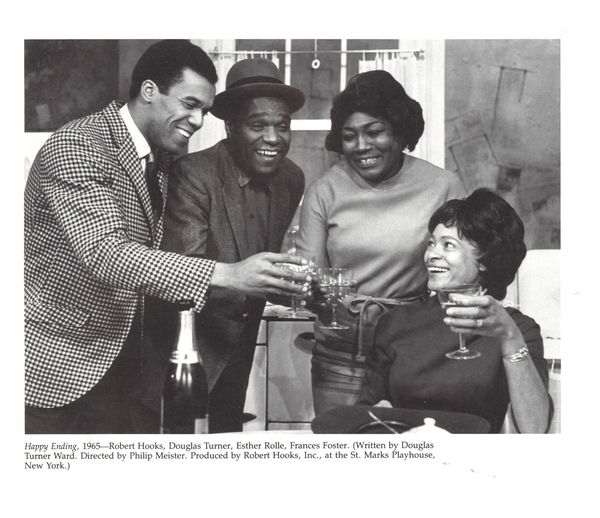
This is the play that started it all! ..The movement that is! “1965: This is from my production of “Happy Ending” (with its hilarious satirical companion play “Day of Absence”) by Douglas Turner Ward that was the true genesis for the creation – in 1967 – of the now legendary Black theatre institution The Negro Ensemble Company. The seed was planted three years before this when I created my very first theatre company – The Group Theatre Workshop (GTW, a company of young, aspiring New York actors, dancers, writers, and theatre designers) out of my Chelsea apartment where they did scene study, movement and other daily workshops. (I was soon evicted for tearing down a wall to create a stage for them!) All while I was performing in “Dutchman” at the time. In this scene from Happy Ending are Me, Douglas, Esther Rolle, and Frances Foster! An amazing beginning to a historic Black theatre movement in America!“

“Here are scenes from the rarely seen film “Sweet Love Bitter“, ( adapted from the John Williams novel “Night Sing” ) circa 1967. The story of Jazz great Charlie Parker and his relationships outside of his brilliant alto sax greatness in the jazz world. How this wonderful Herb Danska directed film escaped recognition on the recent Documentary on comedian Dick Gregory is a mystery to me. Gregory brilliantly portrayed the tortured Charlie Parker. I played the Miles Davis character and Bird’s best friend in the film. In addition to Dick Gregory and me, the film also included Don Murray, Diane Varsi, and Jerri Archer. Music by Mal Waldron and Chick Corea, A recent documentary on Dick Gregory completely leaves out any mention of this amazing dramatic film performance, yet it shows Gregory in a silly comedy role as a bathroom towel valet from a comedy film he did later in his career. But I was proud to share the screen with this incredible artist and political activist Dick Gregory!”

